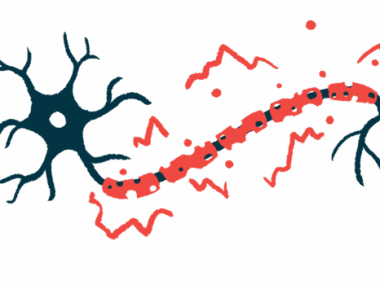Rare CMT1 Case Due to Simultaneous Mutations in MPZ and MFN2 Genes
Written by |

A 12-year-old boy with Charcot-Marie-Tooth type 1 (CMT1) was found in a rare case study to carry variants in two different genes, MPZ and MFN2.
The variant in MPZ has been previously described and was deemed likely the main cause of CMT in the patient, while the MFN2 variant may have contributed to his symptoms.
The report, “Concomitant MPZ and MFN2 Gene Variants and Charcot Marie Tooth Disease in a Boy: Clinical and Genetic Analysis — Literature Review,” was published in the journal Case Reports in Pediatrics.
CMT is a group of inherited progressive disorders of the peripheral nervous system, which controls movement and sensation in the limbs. Among other subtypes, the disorder is mainly divided into “demyelinating CMT,” also known as CMT1, and “axonal CMT,” or CMT type 2 (CMT2).
Mutations in more than 100 genes have been shown to cause the various types of CMT, but over 90% of cases are linked to mutations in four genes: PMP22, GJB1, MPZ, and MFN2.
In this report, researchers in Italy described the case of a patient presenting typical features of CMT1 who carried mutations in both the MPZ and MFN2 genes.
The boy was admitted to the Unit of Clinical Pediatrics, in Catania, due to muscle weakness, walking disturbances, and an abnormal curve of the spine (a condition called kyphoscoliosis). No neurological symptoms were found in his parents and twin sister.
The boy had been born early, when his mother was 34 weeks pregnant. He had remained hospitalized after delivery and underwent surgery for a bilateral inguinal hernia (when tissue protrudes through a weak spot in the abdominal muscles). His mother said that he was delayed in motor development — he began walking at 22 months with frequent falls and a tendency toward stepping gait and tiptoe. Cognitive development was normal.
By age 7, and due to hearing loss in both his ears, he received a cochlear implant — a small device that electrically stimulates the cochlear nerve and provides a sense of sound.
At the time, he showed lower muscle mass, especially in the legs, but preserved muscle strength. He had difficulties walking, with a tendency to tiptoe. The boy also had pes cavus, or high foot arch, a symptom of CMT in both feet and a shortening of the left Achilles tendon.
He was discharged with a diagnosis of CMT but was re-admitted one year later. His weight, height, and blood pressure were found to be normal, as were the function of his heart, lungs, spleen, and liver.
Neurological examination revealed impairments in his touch and vibratory sensation, and in his ability to sense movement and location. A partial improvement in the boy’s hearing was reported. Comprehensive blood analysis showed all parameters analyzed were normal.
Electrophysiological tests (the study of how electrical signals are transmitted in the nervous system) confirmed the absence of response after sensitive and motor stimulation. The flow of electrical stimuli via the peroneal nerve — which supplies movement and sensation to the lower leg, foot, and toes — was decreased.
Genetic analysis of the boy’s DNA revealed two variants, one in the MPZ gene (c.233 C>T p.Ser 78Leu) and the other in the MFN2 gene (c.1403 G>A p.Arg 468His).
The variant in MPZ has been described in the literature as disease-causing for CMT1B, while the mutation in MFN2 is reported as a variant of uncertain significance.
Overall, “the present case shows that MPZ (c.233C<T) mutation gene may likely be the main pathogenetic cause of the CMT in this young boy and the concomitant presence of MFN2 (c.1403G>) gene mutation could have contributed to the clinical expression,” the researchers wrote.
Hearing problems in children should be followed by a “more thorough evaluation of the muscle condition as it may be a clue of possible CMT disorder and precocious treatment of the auditory dysfunction is mandatory,” the report noted.







